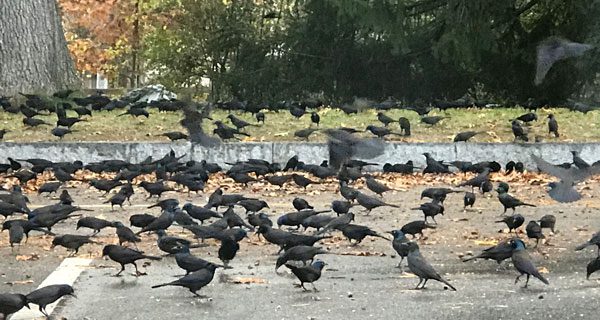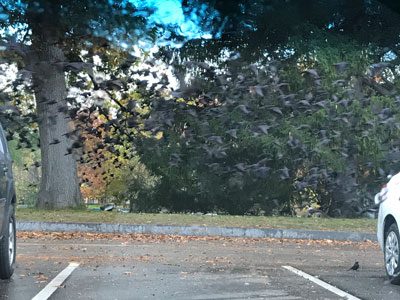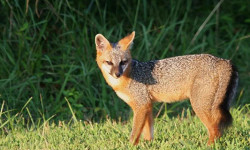[ccfic caption-text format="plaintext"]
By Lisa Moore
Hometown Weekly Correspondent
On December 21 it became official: winter is here, but signs of its eminent arrival have been observable for weeks. Leaves fell from trees, squirrels and chipmunks busily collected seeds and acorns, and other than the winter moth, insects and other small animals have seemingly disappeared from the landscape.
Every living creature has had to develop an adaptation that helps it to survive seasonal changes. For some it is hibernation. Others rely on the next generation to survive with overwintering eggs or larvae.
For some like the over 350 species of North American birds, the adaptation they have developed is migration. Migration is the periodic movement of a population of animals in response to changes to their habitat. Scientists believe genetics plays a role in the drive to migrate in addition to the animal responding to seasonal changes, changes to food supply, the amount of daylight, or for breeding.
There are three categories of migration. Short distance migrations may occur as a population moves short distances - for example, from high elevation to low elevation on a mountain. Medium distance migrations may have a population travel across several states. A long distance migration will drive a population from the US and Canada to travel south to Central and South America.
Some birds will travel thousands of miles round-trip between their summer breeding grounds and their winter feeding grounds, driven by genetics and physical changes such as temperature and light to migrate and take advantage of available food sources.
But the journey is fraught with peril.
One defense birds use to improve chances of survival is flocking. When Canada geese fly in V formation, they are cooperating together to share the workload. The front flyer must exert the most energy as it battles headwinds, while each bird behind it gets to fly in the draft of the bird in front, lessening the headwind and allowing for less energy expended. During the flight, each bird will take turns in the front, allowing for others to rest.
Teamwork is also an excellent defense against predators. Fish form schools, grazers form massive herds, and birds form flocks, all for the same basic reason: larger numbers make it hard for predators to single out one animal to target.
But who is in charge? Scientists have spent ages marveling at the seemingly impossible coordinated movement of massive flocks of birds. Does one bird lead all the others? How do they avoid crashing into each other as they make seemingly random shifts in space?
After years of study and with the aid of computer models, scientists have learned that the answer is fairly simple. There is no single leader. Each individual bird watches the actions of its seven closest neighbors in the flock and follows three basic principles. First, always fly toward your neighbors. Second, don’t crowd each other. And third, if a neighbor turns, you turn. Using simulated flocks in a computer model, scientists are able to mimic the behavior of massive flocks like those of the starling.
In this region, starlings are an invasive species. These birds have taken to the area with ease, much to the dismay and misfortune of other local native birds. In the late 1800s, between 60 and 100 birds were released in Central Park, New York City. Today the North American population is estimated to be 200 million. Being adapted to eat anything from insects to seeds, these birds can survive in almost any environment and wreak havoc in large flocks, eating crops and leaving behind a large mess of waste. Native to Europe, the starling migration flocks, called murmurations, can number near half a million birds. The aerial show they put on when they are flying is breathtaking - it represents the ultimate defense against an airborne predator.
Another local bird we will see flocking in large numbers is the grackle. The grackle is a medium-sized black bird with an iridescent sheen to its feathers. Its yellow eyes make it seem as if it is keenly aware of its surroundings. Flocking in the hundreds, these birds make quite a loud chorus of squawks and screeches when they stop to feed, marching across grassy fields probing for grubs and insects.
Scientists are still learning about bird behavior using techniques like bird banding, satellite trackers, and geolocators to monitor bird migration. In addition, citizen scientists have increased understanding of bird behavior by uploading their findings on various bird apps and e-data collection sites.
For more information on bird migration, visit www.allaboutbirds.org.























